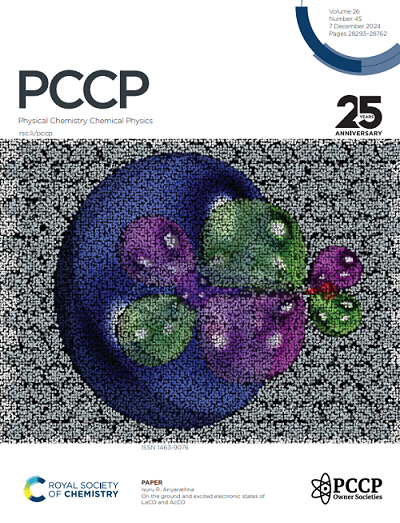Unlocking the Sensing and Scavenging Potential of Sc2CO2 and Sc2CO2/ TMD Heterostructures for Phosgene Detection
IF 2.9
3区 化学
Q3 CHEMISTRY, PHYSICAL
引用次数: 0
Abstract
The detection of phosgene is critically important due to its extreme toxicity and potential use as a chemical warfare agent to ensure public safety and security. Two-dimensional (2D) scandium carbide MXenes (Sc2CTx; T=O–, x=2) stands out as a promising material for gas sensing applications due to their unique electronic and adsorption properties. In this study, the first-principle calculations based on the GGA-PBE functional was employed to investigate the structural, electronic, and mechanical characteristics of Sc2CO2 with different positions of surface termination. The adsorption behavior of Sc2CO2 was systematically explored towards various gas molecules including N2, O2, CO, NO, CH4, H2S, and notably, phosgene (COCl2). Specifically, phosgene exhibits a high adsorption energy, highlighting the material’s selectivity towards this toxic gas. Furthermore, this study investigates the impact of gas adsorption on the electronic structure of Sc2CO2. The strategies such as, increasing operating temperatures and forming heterostructures with transition metal di-chalcogenides (MoSe2, WSe2), have proven to be highly effective to mitigate the challenges related to slow recovery time. This work underscores the potential of Sc2CO2 MXenes as highly sensitive and selective gas sensors, particularly for phosgene sensing.求助全文
约1分钟内获得全文
求助全文
来源期刊

Physical Chemistry Chemical Physics
化学-物理:原子、分子和化学物理
CiteScore
5.50
自引率
9.10%
发文量
2675
审稿时长
2.0 months
期刊介绍:
Physical Chemistry Chemical Physics (PCCP) is an international journal co-owned by 19 physical chemistry and physics societies from around the world. This journal publishes original, cutting-edge research in physical chemistry, chemical physics and biophysical chemistry. To be suitable for publication in PCCP, articles must include significant innovation and/or insight into physical chemistry; this is the most important criterion that reviewers and Editors will judge against when evaluating submissions.
The journal has a broad scope and welcomes contributions spanning experiment, theory, computation and data science. Topical coverage includes spectroscopy, dynamics, kinetics, statistical mechanics, thermodynamics, electrochemistry, catalysis, surface science, quantum mechanics, quantum computing and machine learning. Interdisciplinary research areas such as polymers and soft matter, materials, nanoscience, energy, surfaces/interfaces, and biophysical chemistry are welcomed if they demonstrate significant innovation and/or insight into physical chemistry. Joined experimental/theoretical studies are particularly appreciated when complementary and based on up-to-date approaches.
 求助内容:
求助内容: 应助结果提醒方式:
应助结果提醒方式:


